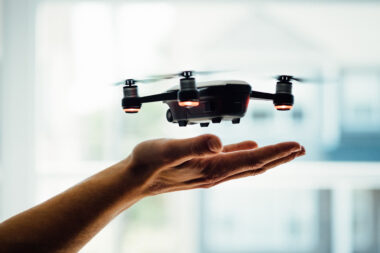The quest to create robots that mimic human movement has fascinated scientists and engineers for decades. Central to achieving this goal is the development of artificial muscles, which promise to endow robots with the flexibility, strength, and responsiveness of human muscles. Unlike traditional rigid actuators, artificial muscles offer a more naturalistic mode of movement, enabling robots to interact with their environment in ways previously unimaginable.
Evolution of Artificial Muscles
Early Developments
The concept of artificial muscles can be traced back to the 1950s and 60s when early roboticists began exploring ways to replicate human muscle function. Initial efforts focused on pneumatic and hydraulic systems, which, while powerful, were cumbersome and lacked the finesse required for delicate tasks. These early systems laid the groundwork for understanding the challenges involved in creating muscle-like actuators.
Advances in Materials Science
The significant leap forward came with advances in materials science, particularly the development of smart materials that could change shape or size in response to external stimuli. The late 20th century saw the introduction of electroactive polymers (EAPs), shape memory alloys (SMAs), and carbon nanotubes, which provided the flexibility and responsiveness needed for more refined artificial muscles.
Modern Innovations
In recent years, research has focused on enhancing the performance and scalability of artificial muscles. Innovations such as dielectric elastomers, ionic polymer-metal composites (IPMCs), and graphene-based materials have led to the creation of artificial muscles that are not only more efficient but also capable of complex, human-like movements.
Types of Artificial Muscles
Pneumatic Artificial Muscles (PAMs)
Structure and Function
Pneumatic Artificial Muscles (PAMs), also known as McKibben muscles, consist of a flexible, inflatable inner bladder surrounded by a braided mesh shell. When air pressure is applied to the bladder, it expands radially but contracts axially due to the restraining action of the mesh. This contraction mimics the behavior of biological muscles, generating force and movement.
Characteristics and Applications
PAMs are known for their high power-to-weight ratio, providing significant force while being relatively lightweight. They are capable of smooth and natural movements, which makes them suitable for applications requiring high strength and flexibility, such as robotic exoskeletons, prosthetic devices, and rehabilitation robots.
However, PAMs require a continuous air supply and a complex system of valves and regulators to control the air pressure precisely. This makes them less suitable for compact or portable robots, but ideal for stationary or semi-mobile systems where the air supply infrastructure can be accommodated.
Electroactive Polymers (EAPs)
Ionic EAPs
Ionic EAPs function by the movement of ions within the polymer matrix in response to an electric field. When voltage is applied, ions migrate within the polymer, causing it to bend or stretch. Examples include Ionic Polymer-Metal Composites (IPMCs) and conductive polymers.
IPMCs: These consist of a polymer matrix, often Nafion, plated with a thin metal layer on both sides. When voltage is applied, the ions within the polymer move, causing it to bend. IPMCs operate at low voltages and produce significant bending displacement, making them ideal for soft robotics and biomedical applications where gentle, precise movements are required.
Electronic EAPs
Electronic EAPs rely on electrostatic forces to induce deformation. These materials generally operate at higher voltages than ionic EAPs but can produce larger forces and faster responses.
Dielectric Elastomers: Composed of a flexible polymer sandwiched between two compliant electrodes, these materials deform when a voltage is applied, causing the polymer to compress and expand in the planar direction. Dielectric elastomers offer high energy density and rapid actuation, making them suitable for applications such as soft robotics, artificial limbs, and adaptive optics.
Shape Memory Alloys (SMAs)
Mechanism
Shape Memory Alloys (SMAs) are metals that can return to a pre-defined shape when subjected to a thermal stimulus. The most common SMA is an alloy of nickel and titanium, known as Nitinol. SMAs exploit the phase transformation between the martensite and austenite phases, which allows them to “remember” their original shape.
Characteristics and Applications
SMAs generate high force relative to their size and can be miniaturized, which is advantageous for applications in micro-robotics and medical devices. They are often used in actuators for aerospace, automotive applications, and medical stents.
However, SMAs have several drawbacks, including slow response times due to the need for thermal cycling, limited strain (usually around 4-8%), and high energy consumption for heating. Research is ongoing to develop SMAs with faster response times and greater durability.
Carbon Nanotube Muscles
Properties and Mechanism
Carbon nanotubes (CNTs) are cylindrical molecules composed of carbon atoms arranged in a hexagonal lattice. When an electric charge is applied, CNTs can undergo mechanical deformation, such as twisting or contracting, due to electrostatic forces.
Characteristics and Applications
CNT muscles are incredibly strong, lightweight, and capable of generating significant mechanical power. They exhibit high efficiency, long operational life, and rapid response times. Their potential applications are vast, ranging from micro-robots and medical devices to adaptive materials and aerospace components.
The primary challenge with CNT muscles is scalability and cost. The production of high-quality CNTs is still expensive and complex, which limits their widespread adoption. Ongoing research aims to develop more cost-effective manufacturing processes to enable broader use of this technology.
Dielectric Elastomers
Mechanism
Dielectric elastomers are a type of EAP consisting of an elastomeric (stretchable) polymer layer sandwiched between two compliant electrodes. When a voltage is applied across the electrodes, the electrostatic attraction between them compresses the polymer in thickness and expands it in the plane, causing the material to contract.
Characteristics and Applications
Dielectric elastomers are known for their high energy density, fast response times, and large strains (up to 300%). They can generate significant force and are capable of producing rapid and powerful movements. These properties make them ideal for applications such as artificial muscles in soft robotics, haptic feedback devices, and adaptive optics.
One of the main advantages of dielectric elastomers is their potential for high efficiency and durability. However, they typically require high operating voltages, which can pose safety and design challenges. Researchers are exploring ways to reduce the required voltage and improve the reliability of these materials under prolonged use.
Ionic Polymer-Metal Composites (IPMCs)
Structure and Function
IPMCs consist of a base ionic polymer, typically Nafion or Flemion, with a thin metallic plating, usually platinum or gold, on both surfaces. When an electric field is applied, cations within the polymer migrate towards the cathode, causing the polymer to bend due to differential swelling.
Characteristics and Applications
IPMCs operate at low voltages (1-3V), making them safe and convenient for biomedical applications. They produce large bending displacements, which is beneficial for soft robotic actuators, artificial muscles, and bio-inspired robots. Their soft, compliant nature allows them to mimic the gentle, flexible movements of biological tissues.
However, IPMCs have limitations in terms of force output and long-term stability. Their performance can degrade over time due to ion leakage and electrode delamination. Research is focused on improving the durability and force generation capabilities of IPMCs.
Hydrogel Muscles
Structure and Function
Hydrogels are networks of polymer chains that can absorb and retain large amounts of water. Some hydrogels can change their shape or volume in response to various stimuli such as pH, temperature, or electric fields. These responsive hydrogels can act as artificial muscles by swelling or contracting in a controlled manner.
Characteristics and Applications
Hydrogel muscles are highly biocompatible, making them suitable for medical and biomedical applications, such as drug delivery systems, artificial tissues, and soft robotics. They are capable of producing large deformations and can operate in wet environments, which is advantageous for underwater robotics and bio-integrated devices.
Applications of Artificial Muscles
Medical Robotics and Prosthetics
One of the most impactful applications of artificial muscles is in medical robotics and prosthetics. Artificial muscles can provide prosthetic limbs with a level of dexterity and strength that closely mimics natural human movement. For example, advanced prosthetic hands equipped with EAPs or SMAs can perform complex tasks such as gripping and manipulating small objects, greatly enhancing the quality of life for amputees.
Exoskeletons
Exoskeletons, wearable robotic suits designed to assist with movement, can benefit significantly from artificial muscles. These devices are used in rehabilitation to help patients regain mobility and in industrial settings to augment human strength. PAMs and EAPs are particularly well-suited for exoskeletons due to their high power output and flexibility.
Soft Robotics
Soft robotics, a field focused on creating robots from highly flexible materials, relies heavily on artificial muscles. Soft robots equipped with EAPs or dielectric elastomers can navigate complex environments, squeeze through tight spaces, and handle delicate objects, making them ideal for search and rescue operations, medical procedures, and precision manufacturing.
Humanoid Robots
Humanoid robots, designed to look and move like humans, represent one of the ultimate applications of artificial muscles. By using artificial muscles, these robots can achieve lifelike movements and expressions, enabling them to interact with humans in more natural and intuitive ways. This has significant implications for service robots, companion robots, and robots used in customer service and hospitality industries.
Aerospace and Defense
In aerospace and defense, artificial muscles can be used to create more efficient and adaptive control surfaces for aircraft and unmanned aerial vehicles (UAVs). These muscles can enable rapid adjustments to wing shape and other control surfaces, improving maneuverability and performance. Additionally, lightweight and compact artificial muscles can be used in space exploration for robotic arms and other mechanisms requiring high precision and reliability.
Challenges and Future Prospects
Technical Challenges
Despite the remarkable progress, several technical challenges remain in the development and deployment of artificial muscles. Key issues include:
Energy Efficiency: Many artificial muscles, particularly SMAs and some EAPs, require significant energy to operate, which can limit their practicality for long-term use or portable applications.
Control Complexity: Achieving precise control of artificial muscles often requires sophisticated feedback systems and algorithms, adding complexity to robotic designs.
Durability and Longevity: Ensuring that artificial muscles can withstand repeated cycles of contraction and relaxation without degradation is crucial for their reliability and longevity.
Future Directions
The future of artificial muscles is promising, with ongoing research focusing on overcoming current limitations and exploring new possibilities. Some of the key areas of future development include:
Hybrid Systems: Combining different types of artificial muscles to leverage their respective strengths can lead to more versatile and efficient robotic systems. For example, integrating PAMs with EAPs could provide a balance of power and precision.
Biomimetic Designs: Drawing inspiration from biological muscles and other natural systems can lead to innovative designs that enhance the performance and functionality of artificial muscles.
Advanced Materials: The development of new materials, such as graphene and advanced composites, holds the potential to create artificial muscles with unprecedented strength, flexibility, and efficiency.
Improved Control Systems: Advances in artificial intelligence and machine learning can lead to more sophisticated control algorithms that enable smoother and more natural movements of artificial muscles.
Scalability and Manufacturing: Research into scalable manufacturing techniques can make artificial muscles more affordable and accessible for a wide range of applications.
Artificial muscles represent a transformative technology in the field of robotics, offering the potential to create machines that move with the grace and precision of humans. From medical prosthetics and exoskeletons to soft robots and humanoid robots, the applications of artificial muscles are vast and varied. While technical challenges remain, ongoing research and innovation are steadily advancing the capabilities of these remarkable actuators. As artificial muscles continue to evolve, they will play a crucial role in shaping the future of robotics, bringing us closer to a world where robots seamlessly integrate into our daily lives, enhancing our abilities and improving our quality of life.



